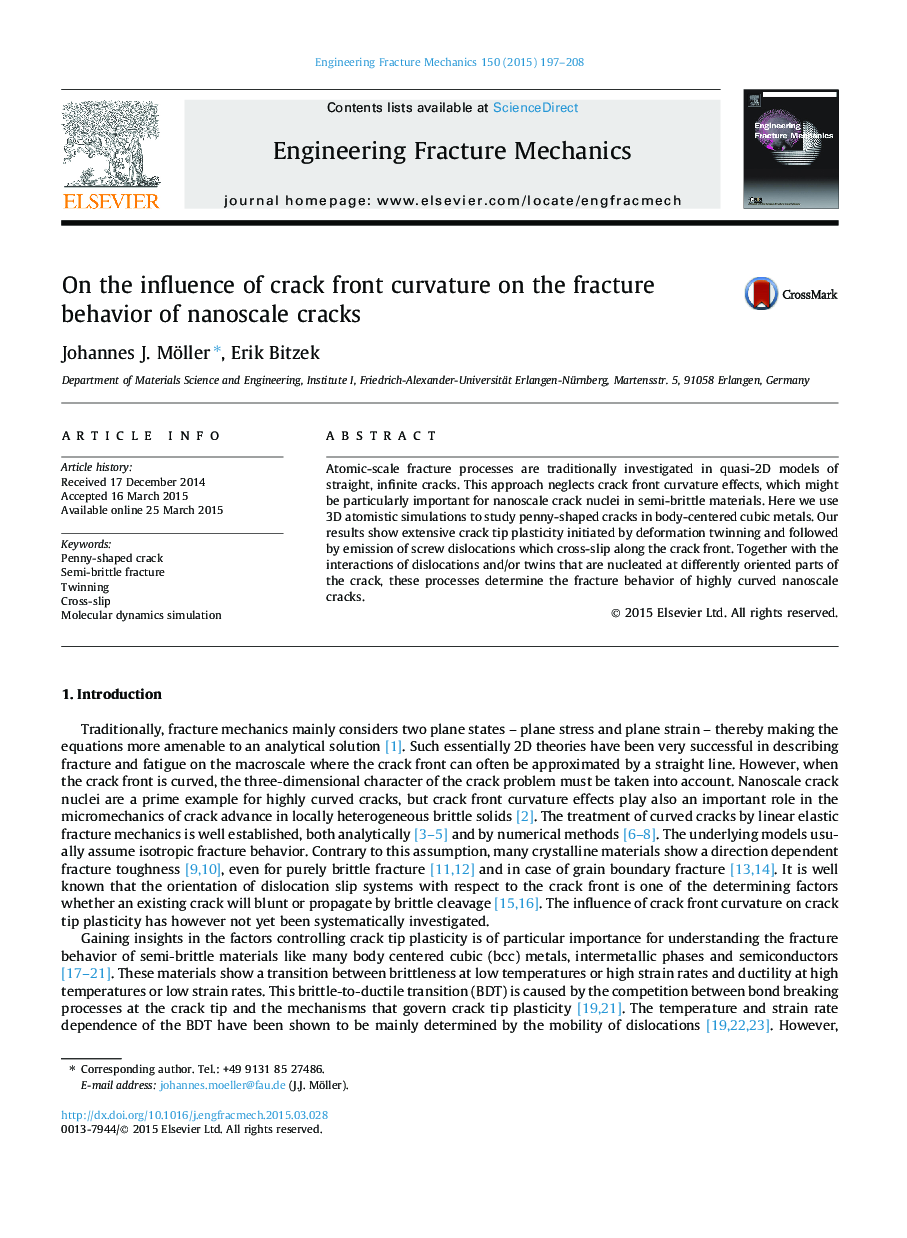| Article ID | Journal | Published Year | Pages | File Type |
|---|---|---|---|---|
| 770231 | Engineering Fracture Mechanics | 2015 | 12 Pages |
Abstract
Atomic-scale fracture processes are traditionally investigated in quasi-2D models of straight, infinite cracks. This approach neglects crack front curvature effects, which might be particularly important for nanoscale crack nuclei in semi-brittle materials. Here we use 3D atomistic simulations to study penny-shaped cracks in body-centered cubic metals. Our results show extensive crack tip plasticity initiated by deformation twinning and followed by emission of screw dislocations which cross-slip along the crack front. Together with the interactions of dislocations and/or twins that are nucleated at differently oriented parts of the crack, these processes determine the fracture behavior of highly curved nanoscale cracks.
Related Topics
Physical Sciences and Engineering
Engineering
Mechanical Engineering
Authors
Johannes J. Möller, Erik Bitzek,
